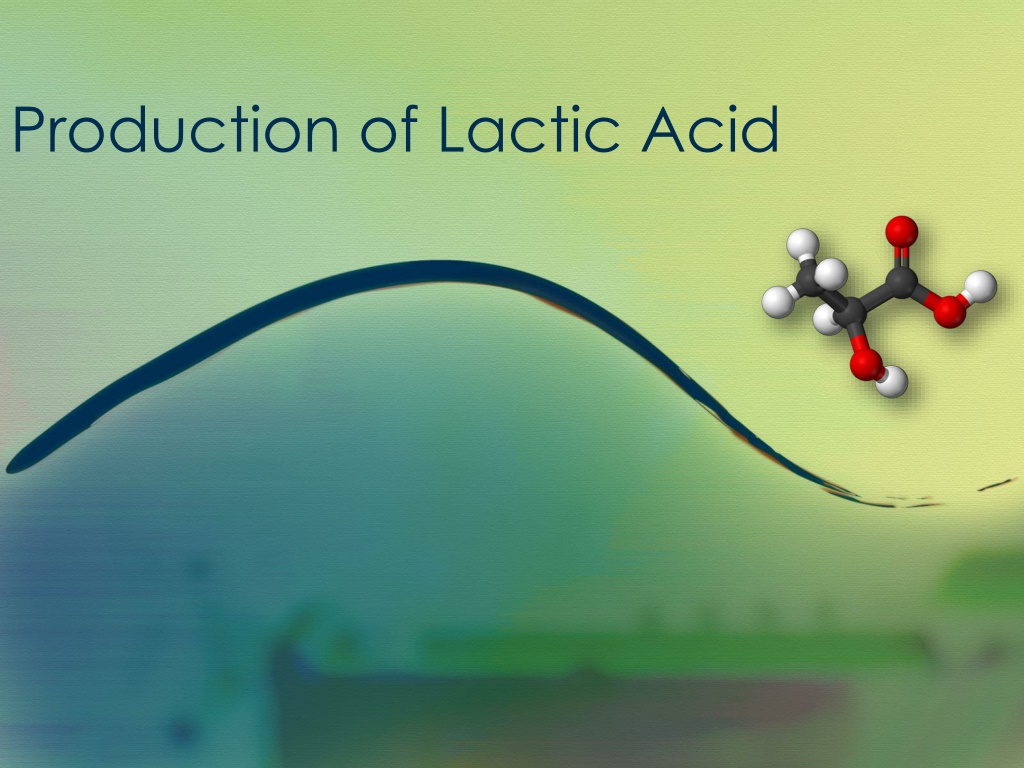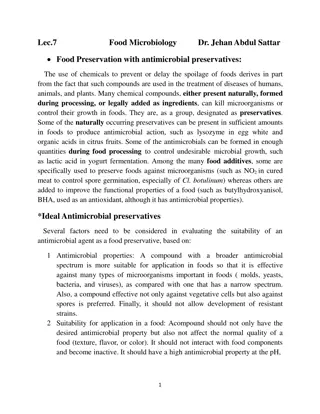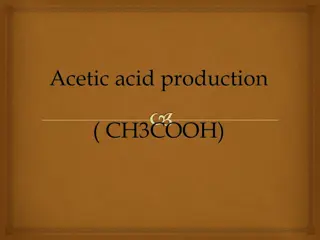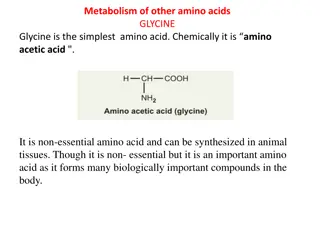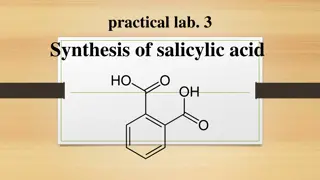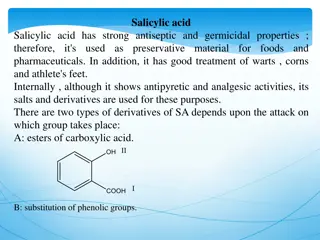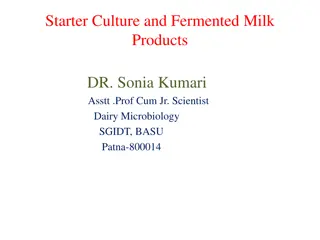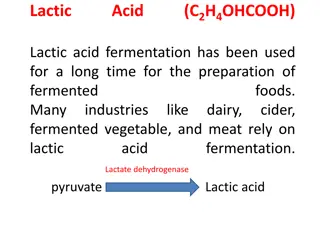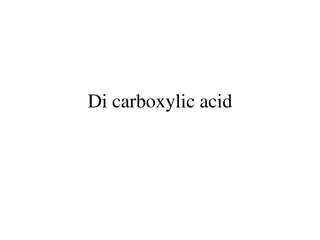Overview of Lactic Acid Production and Applications
Lactic acid occurs in two isomeric forms and has various applications in food, pharmaceuticals, and skincare industries. It is primarily produced through the fermentation of sugars by microorganisms. The production process involves using raw materials like purified sugars and agricultural wastes. The pathway of converting glucose to lactic acid is described, along with the role of different types of microorganisms. The process system for lactic acid production involves the use of specific fermenters and conditions to ensure optimal results.
Download Presentation

Please find below an Image/Link to download the presentation.
The content on the website is provided AS IS for your information and personal use only. It may not be sold, licensed, or shared on other websites without obtaining consent from the author. Download presentation by click this link. If you encounter any issues during the download, it is possible that the publisher has removed the file from their server.
E N D
Presentation Transcript
About Lactic acid Occurs in two isomeric forms L(+)/D(-) and as mixture. First isolated from Milk in 1798. First organic acid to be produced by microorganisms in 1880.
Applications of Lactic Acid the major use of lactic acid is in foods as an acidulant and preservative. Lactic acid and its salts are generally recognized as safe (GRAS) food additives by the Food and Drug Administration (FDA) Sodium lactate is used in parenteral and kidney dialysis solutions, while calcium and magnesium lactates can be used in treating mineral deficiencies. In skin care products, lactic acid is incorporated in formulations as an -hydroxy acid for improving skin texture and appearance. Lactic acid esters with fatty acids as emulsifiers, builders, and stabilizers in toiletries and personal care products.
The pathway Sugars such as glucose and sucrose are metabolized by these bacteria to lactic acid through the Embden Meyerhof pathway, with a theoretical conversion of 1 mol of glucose to 2 mol of lactic acid 1G of glucose to 1G of lactic acid.
Microorganisms Heterofermentative bacteria Homofermentative Bacteria Produce other by products and therefore are not much useful for industrial production Food and feed preservation Specialised for exlusive production
Raw Materials purified sugars such as glucose, sucrose, and lactose. food-processing wastes containing these sugars such as waste banana pulp, pineapple wastes, sugar cane juice, and cheese whey. agricultural and industrial wastes containing complex carbohydrates such as starches, hemicellulose, or cellulose. Examples include soluble and raw starches, and enzyme-hydrolyzed wheat bran, rice bran, soybean stalks, cassava, and sugar cane bagasse.
Process System Fermenters for lactic acid production are preferably constructed of 316 low-carbon stainless steel, owing to the corrosive action of this acid. Fermenters used in processes based on lactic acid bacteria that grow above 45 C, such as L. casei subsp. rhamnosus, are cleaned, steamed, or treated with boiling water or disinfectants or both to provide clean and aseptic but nonsterile conditions. In commercial scale lactic acid bacterial processes, the cells are kept in suspension in the production medium by mixing with mechanical agitators or circulating the medium from the bottom to the top of the fermenter by pumping.
Product Recovery and Purification Early commercial scale lactic acid bacterial fermentation processes employed neutralization with calcium carbonate, heating to 82.2 C (180 F) to kill the lactic acid bacteria, filtering to separate calcium lactate, Acidifying with sulfuric acid, filtering to remove calcium sulfate, concentrating the lactic acid solution by multiple vacuum evaporation, decolorizing with activated carbon, Precipitating heavy metals with sodium sulfide.
Lactic acid can be purified by distillation of methyl, isobutyl, or 2-methyl isobutyl lactate esters, followed by hydrolysis of the esters. solvent extraction with isopropyl ether has been practiced on a commercial scale. More recent methods for lactic acid recovery include centrifugation, or membrane filtration using either microfiltration (0.2 mm pore size) or ultrafiltration to separate the cells and higher-molecular weight residues such as peptides in the spent production medium. Heavy metals are removed using cation exchange resins. Lactic acid can be extracted from the fermentation medium using a strong anion exchanger, such as Amberlite IRA-400 in the chloride form, followed by elution with 1.0 M H2SO4 at pH 5.0 or with water at pH 2.0 to give high recoveries in the 86 92% range.
